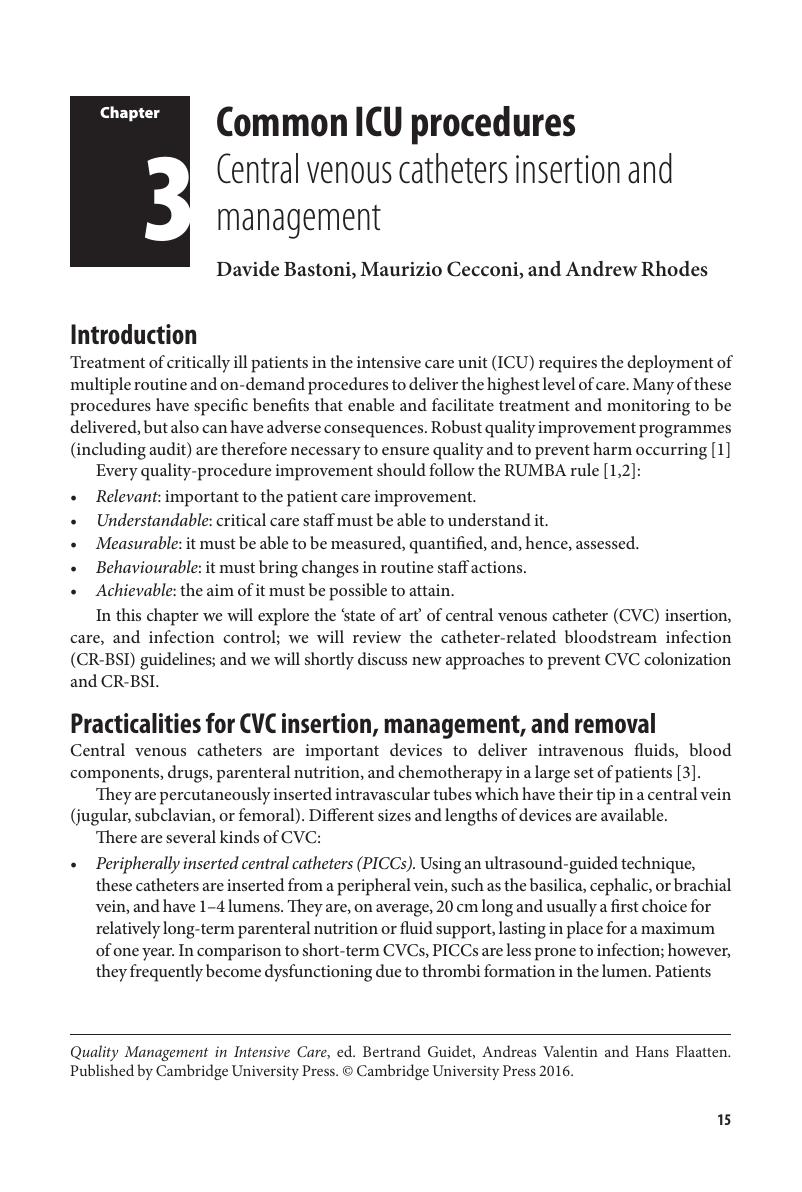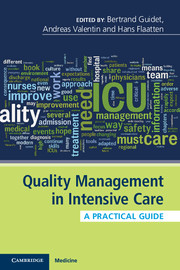Book contents
- Quality Management in Intensive CareA Practical Guide
- Quality Management in Intensive Care
- Copyright page
- Contents
- Contributors
- Introduction
- Section 1 Quality management of patient care
- 1 Use of checklists
- 2 Daily goal discussions
- 3 Common ICU procedures
- 4 Use of guidelines and bundles
- 5 Nosocomial/healthcare-associated infections
- 6 Optimal handover of ICU patients
- 7 Diagnostic pathways
- 8 Transport of ICU patients
- 9 Mortality and morbidity conferences
- 10 Intensive care unit triage
- 11 End-of-life care
- Section 2 Quality management of the ICU
- Section 3 Quality management on the national (and international) level
- Epilogue
- Index
- References
3 - Common ICU procedures
Central venous catheters insertion and management
from Section 1 - Quality management of patient care
Published online by Cambridge University Press: 05 February 2016
- Quality Management in Intensive CareA Practical Guide
- Quality Management in Intensive Care
- Copyright page
- Contents
- Contributors
- Introduction
- Section 1 Quality management of patient care
- 1 Use of checklists
- 2 Daily goal discussions
- 3 Common ICU procedures
- 4 Use of guidelines and bundles
- 5 Nosocomial/healthcare-associated infections
- 6 Optimal handover of ICU patients
- 7 Diagnostic pathways
- 8 Transport of ICU patients
- 9 Mortality and morbidity conferences
- 10 Intensive care unit triage
- 11 End-of-life care
- Section 2 Quality management of the ICU
- Section 3 Quality management on the national (and international) level
- Epilogue
- Index
- References
Summary

- Type
- Chapter
- Information
- Quality Management in Intensive CareA Practical Guide, pp. 15 - 26Publisher: Cambridge University PressPrint publication year: 2016

